Best-of-the-Best Shore Lunch Tips
Tony Capecchi 09.06.17

Catching fish is fantastic, but eating fresh fish is even better – provided you know the secrets to preparing the perfect shore lunch.
Check out the gifs below for guide secrets on cleaning and cooking fish like a boss, then visit the Cook with Cabela’s page to make your mouth water.
These insights are courtesy of the guides at Aikens Lake Wilderness Lodge in Manitoba, Canada, who have raised shore lunch to an art form with more than 20 recipes, including baked walleye with shallot wine sauce, parmesan walleye and bacon-wrapped walleye bites.
Shore lunch class is now in session – pull up a stump, or rock, and learn from the masters!
Tips for Boneless Walleye Fillets
Carefully cut down along one side of the backbone, then carefully peel away the meat.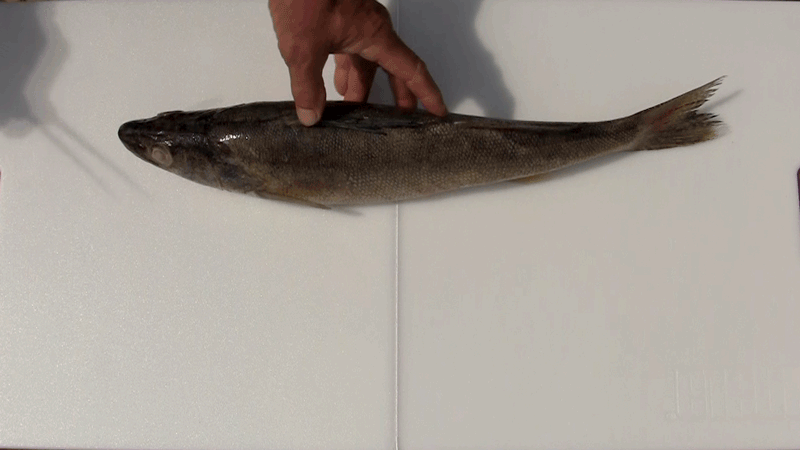
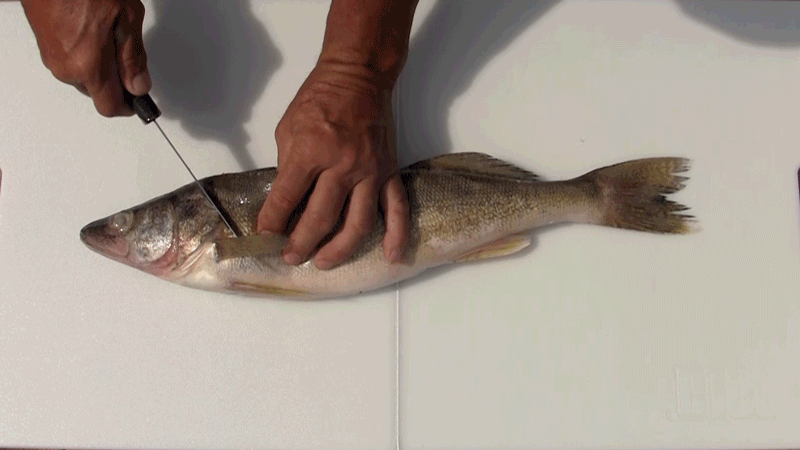 As you hold the fillet, gently slice along the fish’s belly toward the tail, letting the knife do the work.
As you hold the fillet, gently slice along the fish’s belly toward the tail, letting the knife do the work.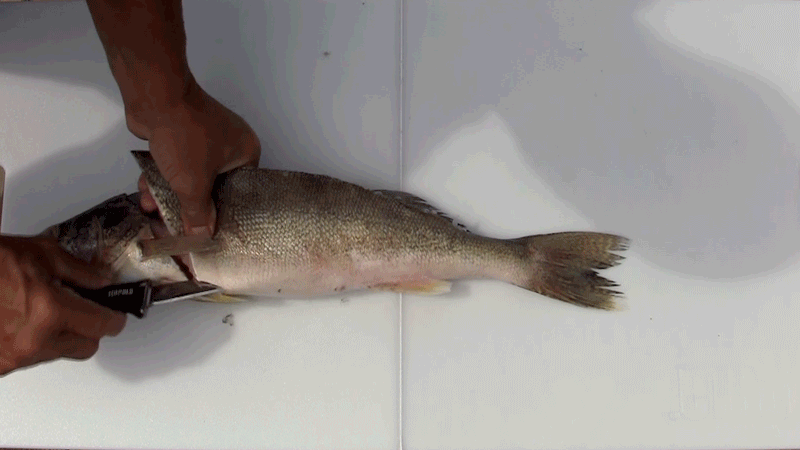 Leave the tail intact during the filleting and skinning process. Make an incision with your knife just inside the tail, gently push down to the skin, then turn your knife at a 45-degree angle. Next, don’t move your knife; instead, hold the knife steady, then grab the meat and tail with your non-knife hand and slowly pull the fillet completely through the knife.
Leave the tail intact during the filleting and skinning process. Make an incision with your knife just inside the tail, gently push down to the skin, then turn your knife at a 45-degree angle. Next, don’t move your knife; instead, hold the knife steady, then grab the meat and tail with your non-knife hand and slowly pull the fillet completely through the knife.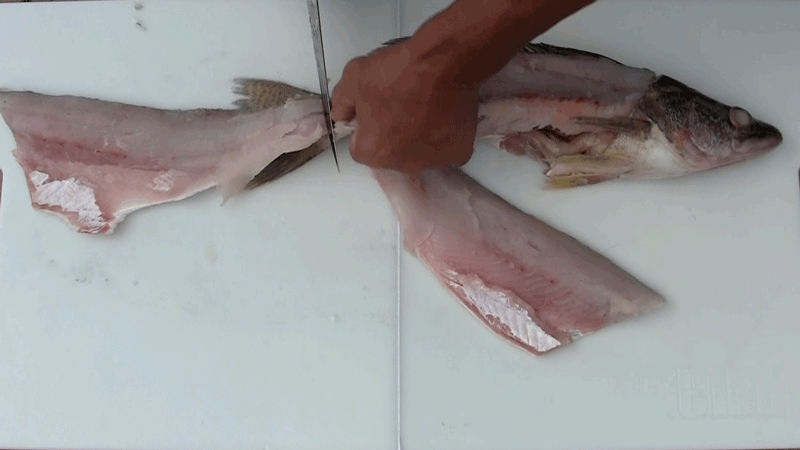 Once you’ve got your fillet skinned, make a 2-inch-long incision on either side of the lateral line.
Once you’ve got your fillet skinned, make a 2-inch-long incision on either side of the lateral line.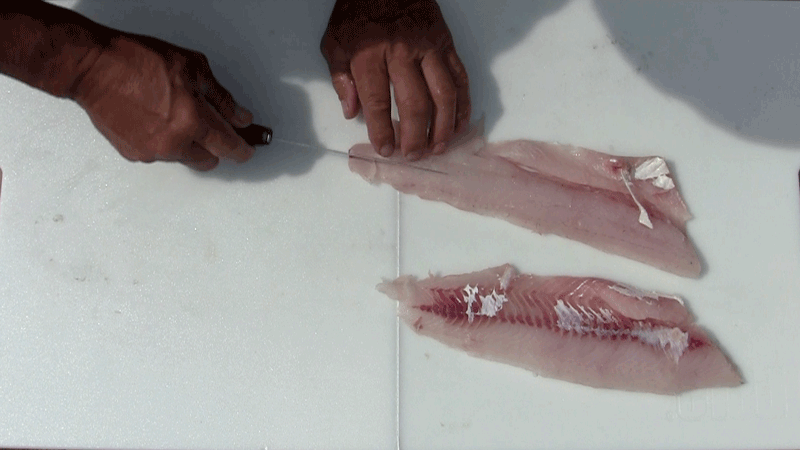 Next, pull apart the fillet with your hands so you end up with two boneless strips of meat, and one lateral strip full of small bones to be discarded. Some guides call this method the “zipper cut.”
Next, pull apart the fillet with your hands so you end up with two boneless strips of meat, and one lateral strip full of small bones to be discarded. Some guides call this method the “zipper cut.”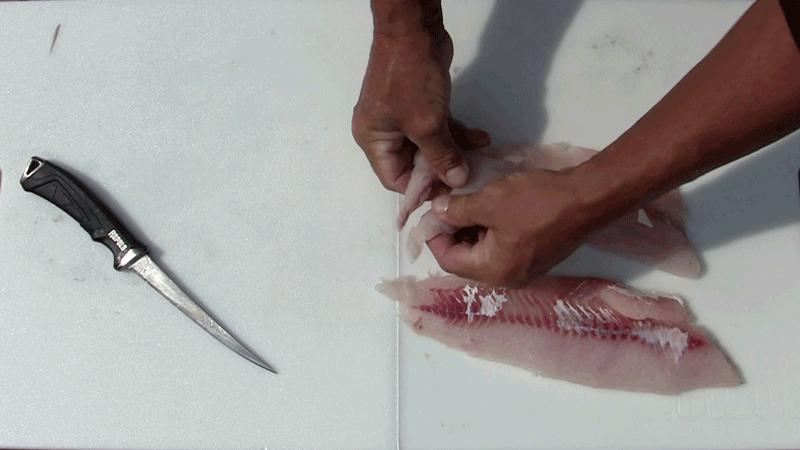
Preparing the Fish
Beer Batter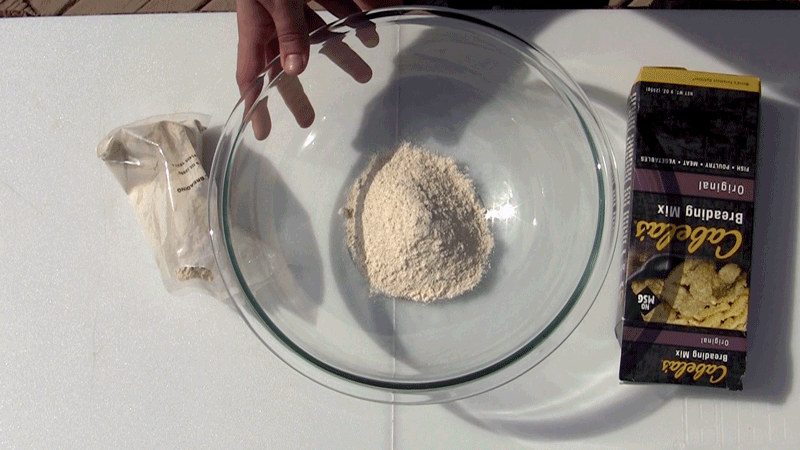 Beer batter is the go-to approach for shore lunch for good reason. A store-bought box mix is tasty and effective, with easy instructions. A full 12-ounce can is recommended only if you use the entire box of batter to cover a full pound of fillets. Pause after half the can has been poured and stir thoroughly to determine if more beer is necessary.
Beer batter is the go-to approach for shore lunch for good reason. A store-bought box mix is tasty and effective, with easy instructions. A full 12-ounce can is recommended only if you use the entire box of batter to cover a full pound of fillets. Pause after half the can has been poured and stir thoroughly to determine if more beer is necessary.
The single most critical factor to crispy-on-the-outside, flaky-on-the-inside perfection? Heating the oil to the correct temperature before adding any fillets to the frying pan.
A common error is to begin frying before the oil is hot enough, an easy mistake when you’re cooking over an open fire and not packing a thermometer in your tackle box.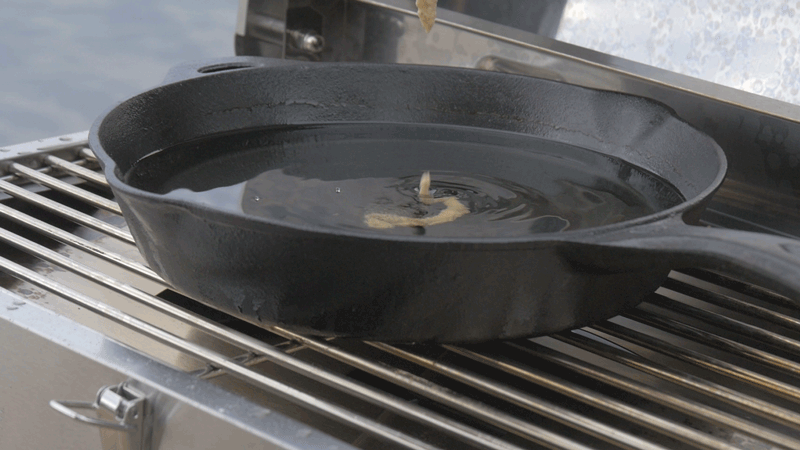 Guide Tip: Dip a fork into your excess beer batter and drop a dollop of the batter into the frying pan. If the batter bounces off the bottom and slowly bubbles back up to the surface, you’re golden. If the batter stays at the bottom of the pan, you need to increase the oil’s temperature before you start frying.
Guide Tip: Dip a fork into your excess beer batter and drop a dollop of the batter into the frying pan. If the batter bounces off the bottom and slowly bubbles back up to the surface, you’re golden. If the batter stays at the bottom of the pan, you need to increase the oil’s temperature before you start frying.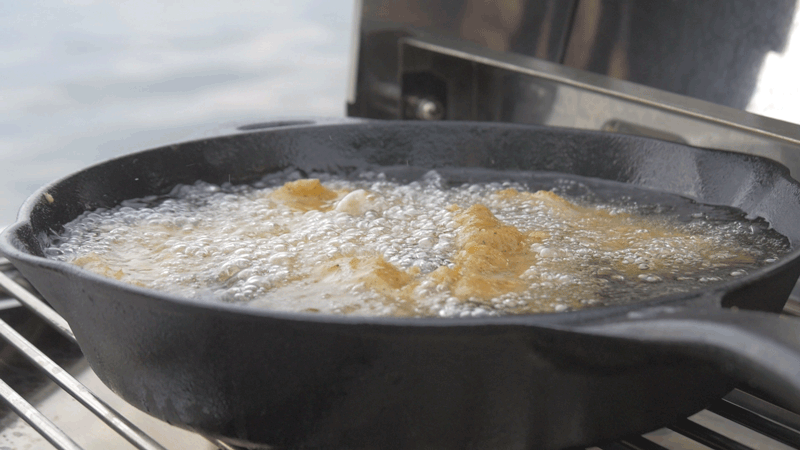
Mustard Fry
Bet you never tried cooking your fish in Heinz mustard. And double or nothing says your first time trying this secret and simple mustard fry won’t be your last.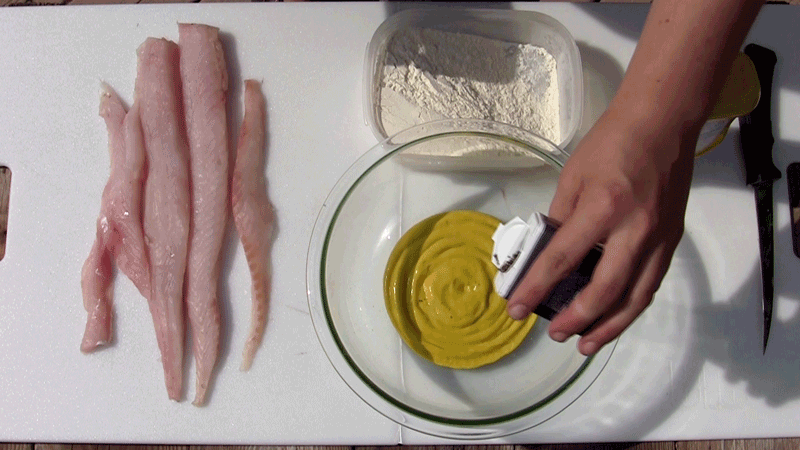 Fill a small bowl with 1 to 2 inches of your standard mustard. Douse it with pepper, stir and repeat until the entire bowl of mustard becomes a darker shade of yellow – go heavy on the pepper. Dip a fillet thoroughly into the bowl so it’s saturated with mustard. Now, coat the mustard-covered fillet with flour. Ensure the fillet is completely coated, then fry as normal in the pan (3-4 minutes usually does it) until the outside is crispy and the inside is firm, flaky and surprisingly delicious. The end result is a lighter-colored and crispier fish with less coating around the meat. It goes great with tartar sauce.
Fill a small bowl with 1 to 2 inches of your standard mustard. Douse it with pepper, stir and repeat until the entire bowl of mustard becomes a darker shade of yellow – go heavy on the pepper. Dip a fillet thoroughly into the bowl so it’s saturated with mustard. Now, coat the mustard-covered fillet with flour. Ensure the fillet is completely coated, then fry as normal in the pan (3-4 minutes usually does it) until the outside is crispy and the inside is firm, flaky and surprisingly delicious. The end result is a lighter-colored and crispier fish with less coating around the meat. It goes great with tartar sauce.
Guide Tip: If you’ve zipper cut your walleye so each half of the fillet is already in two long strips, cut each strip in half so you have four small chunks of fish per fillet. Eight small chunks per walleye delivers the best mustard fry.
The Fixings
Potatoes, onions and baked beans are a given. If you want to add some flair, slice your potatoes long and skinny to make French fries instead of your standard cubed potatoes. Lawry’s Seasoned Salt is a good change-of-pace to salt and pepper on the potatoes.
For the beans, fry some onions and throw them into the beans for extra flavor. A simple way to cook beans is to cut off the can cover, but let it sit inside the can. That way, the cans won’t boil over while cooking them on the grate of an opened fire. You can also toss a bag of tortilla chips into your cooler and offer chips and beans.
For the onions, chop and fry with sliced potatoes in a cast iron skillet in the traditional way, or try cutting some into large loops and then coat them in your beer batter to create deep-fried onion rings.
A French Canadian Specialty
Feeling really creative? Poutines are a classic Canadian dish with French fries, gravy and cheese curds. Melted cheddar can substitute for full-blown curds.
You can also pay homage to America’s neighbor to the south – try fish tacos, featuring fire-warmed tortillas, melted cheese, salsa and fried walleyes.
Can’t Wait to Eat?
If patience is a virtue when it comes to catching fish, that’s doubly true when it comes to cooking them. Take your time, plan and prepare your steps before you get started, and make sure that oil stays at the correct temperature.
You’re better off cooking and serving your fish in stages than over-filling a pan with all your fillets at once.
Guide Tip: You’ve only got 10 fingers. Protect them. Odds are an accident won’t occur today, but what about tomorrow or the next 100 times you prepare shore lunch in various conditions with various levels of concentration? Play it safe and pick up a good pair of filleting gloves.

